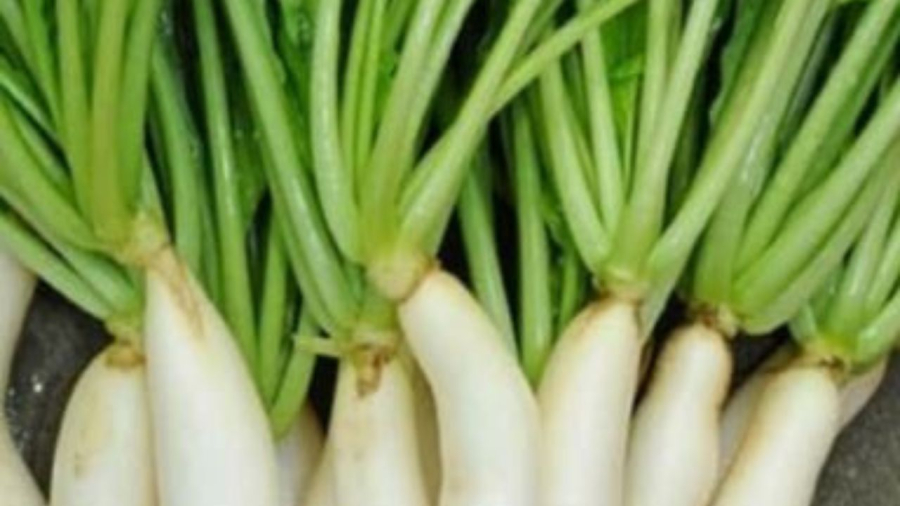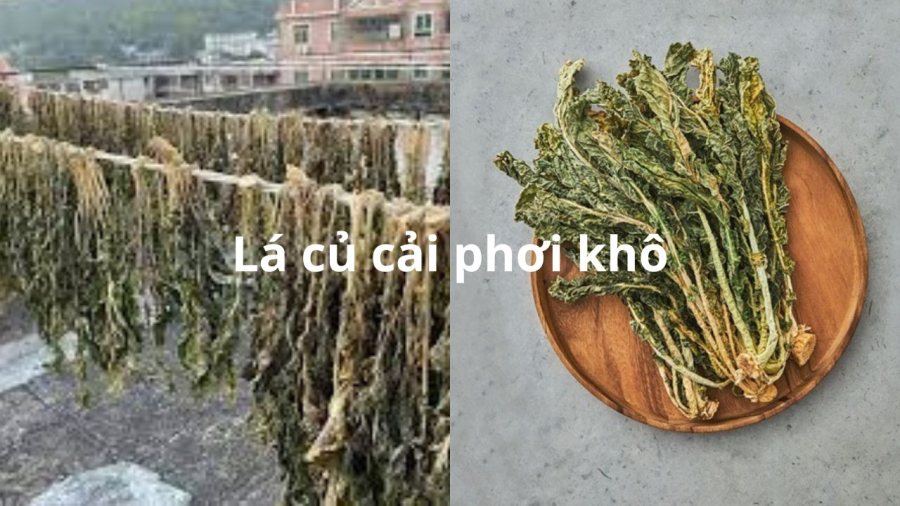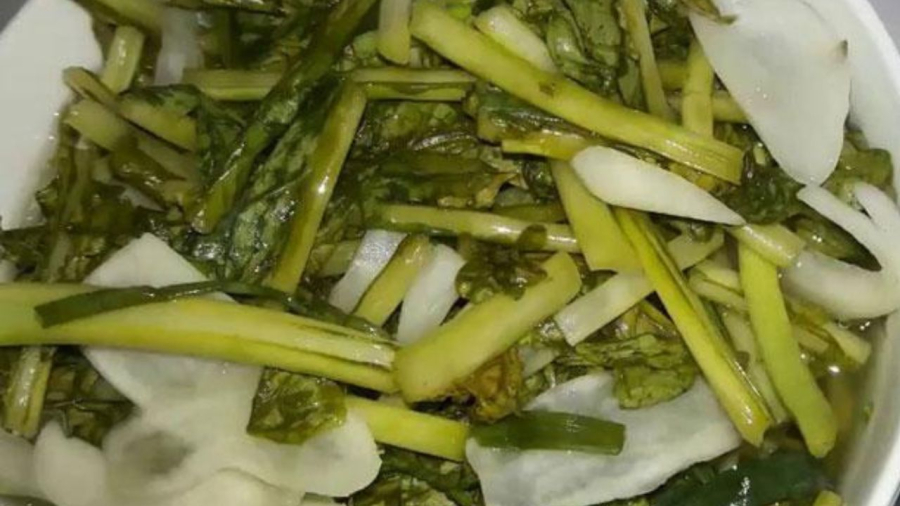Cai vegetables is a popular type of vegetables in Vietnam. Cai vegetables is known as the white ginseng, ginseng of the poor, the ginseng of the common people. But most of us throw away the leaves and only eat the roots. Only a small variety of cai vegetables is eaten with leaves or pickled in salt. In fact, the leaves of the cai vegetables are a “treasure trove” of nutrients.
Moreover, according to Eastern medicine, cai vegetable leaves are also a digestive stimulant, gas regulating, phlegm relieving, cough reducing, throat soothing… The roots of cai vegetables have a cooling effect while the leaves have a warming effect, so eating the leaves and roots together will help balance the body and avoid stomach coldness.

Especially, cai vegetable leaves are richer in calcium than milk
Among the vegetables, cai vegetable leaves are considered to be very rich in calcium. 100g of cai vegetable leaves contains up to 350mg of calcium, much richer than 100ml of regular fresh milk on the market. Therefore, cai vegetable leaves are a natural source of calcium. Furthermore, calcium from vegetables is easier to absorb. Cai vegetable leaves also contain vitamin K, an assistant to help the body absorb calcium better.
That’s why eating cai vegetable leaves is a way to supplement calcium to support strong bones, slow bone loss, and prevent symptoms of calcium deficiency.

Cai vegetable leaves have antioxidant properties
In cai vegetable leaves, there is plenty of quercetin and chlorophyll which have antioxidant effects, slow down the aging process, and protect the cardiovascular system, making the skin more beautiful.
Support brain function improvement
Cai vegetable leaves are rich in vitamin C, which strengthens blood vessels, prevents stroke and blood vessel impairment. Vitamin C also participates in the antioxidant process, slows down aging, and helps the body eliminate aluminum more effectively.
Cai vegetable leaves boost the immune system
With abundant antioxidants and high carotenoid content, cai vegetable leaves help improve the immune system. Moreover, cai vegetable leaves are rich in minerals such as iron, zinc, potassium, and folic acid, which help improve overall health and prevent diseases.
Soothe the throat, prevent throat inflammation
Cai vegetable leaves have a soothing effect on the throat, especially when you have a hoarse voice, throat inflammation, or cough. Cai vegetable leaves have good antibacterial properties, so they can treat colds, dry cough, and other respiratory infections.

Ways to use cai vegetable leaves
Cai vegetable leaves can be used fresh or dried.
The simplest way to use cai vegetable leaves is to boil and eat them like other leafy greens. Or you can combine cai vegetable leaves with cai vegetable roots to make a nutritious drink.
Pickled cai vegetable leaves: Dry the cai vegetable leaves. Then rinse them with salt water, cut into bite-sized pieces. Mix salt, ginger, chili, garlic with water and soak the cai vegetable leaves in this mixture, press the leaves down so they don’t float on the water, let it ferment for about 2-3 days until the leaves turn yellow, then they are ready to eat, avoid eating when the leaves are still green.
Stir-fried dried cai vegetable leaves: Soak the dried cai vegetable leaves in water until they expand, then cut into bite-sized pieces. Stir-fry them with beef or shrimp to make a delicious dish.
Cai vegetable leaf tea: Wash and cook or steep the dried cai vegetable leaves in hot water like regular tea, then drink daily to alleviate stomach pain and improve digestion.






































